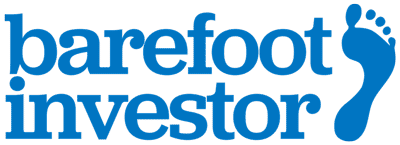Parents, You’re Doing it Wrong
When I was fifteen I would sit in English class and read the Financial Review.(This, of course, made me wildly popular with the ladies.)
Looking back on it I was always going to become the Barefoot Investor: I started working when I was in primary school (for coins!), and had built a prized share portfolio by high school.
Most teenagers don’t give a snapchat about managing their money.
That was confirmed this week by the results of an international financial literacy survey of nearly 15,000 students which found that, on average, 15-year-old Aussie kids struggle to understand financial basics.
“Australian students performed significantly lower in financial literacy than [international] students with similar performance in mathematical and reading literacy”, said the report.
And parents, you know what that means, don’t you?
It means that there’s a real possibility that your grunting, moody, Xboxing teenager could still be fronting up for Coco Pops when they’re in their dirty thirties … possibly accompanied by their fiscally challenged boyfriend.
That’s actually not too far of a stretch: nearly 25 per cent of people aged 20 to 34 continue to live with their parentals, according to the latest HILDA study. And here’s the kicker: research by AMP found that a kidult (aged between 18 and 24) costs a middle-income family $678 a week, or $35,256 a year.
Froot Loops!
Well, allow me to lay out a Barefoot Bootcamp for your teenagers. Do these three things, and you’ll be able to lovingly boot your kids out when they can grow a beard (or date a man with a beard):
#1 Open Up Your Wallet
I’ve always said that the best way to raise financially fit kids is to be financially strong yourself.
Whether you like it or not, they’re modelling your behaviours: do you fight about money? Do you turn off lights when they’re not needed? Do you gamble?
When your kid turns 18, you don’t throw them the keys to the Jag for the first time, do you?
Of course you don’t.
You spend many (frustrating, potentially lethal) hours sitting beside them with the ‘L’ plates up. Their first experience driving comes with you clinging to the seat beside them.
It should be exactly the same with money.
Look, your kids are being actively targeted by the predators of the banking industry (especially if you signed them up for one of those cute little Commbank Dollarmites accounts). You need to make sure they’ve got their money miles up while they still live with you.
The best way to teach your kids about the reality of money is to give them responsibility.
Challenge them to find a lower-cost energy provider — and make a game out of it. If they can get your household bills down by $500 a year, split the difference.
Show them your bank statements, and again challenge them to find a better home loan rate, or (gulp) calculate the amount of interest you’re being whacked on your credit card.
Actually read your super statement, and have your kids calculate the amount of fees you’re paying, and see if they can find a cheaper alternative via superratings.com.au. Then head over to moneysmart.gov.au and check out their managed fund fees calculator to visualise the amount of money you could save by switching.
These are the real-life lessons that will stick with your kids.
#2 Flip it Good!
These days kids get participation trophies. Everyone’s a winner!
Uh-huh.
Kids need to understand that the world isn’t there to serve them — it’s the other way around.
Thankfully there’s an easy fix to this counter-culture: make them get a part-time job.
Every teenager should have a part-time job … preferably with a boss who doesn’t treat them like a unique special snowflake, and one that gives them a bit of acne from flipping greasy burgers.
Again, making them work isn’t really about the work, and it isn’t really about the money — it’s just another tool to give them real-world financial education. They learn to show up on time and work. To get along with other people. To deal with a tough boss (hopefully). To read an employment contract, and, if you’re doing your job right, to choose a good super fund.
This shouldn’t be an elective — it’s an essential part of their formal education. When I’m hiring a young person for my business, I can always pick who has had a part-time job through school. They’re more resilient.
#3 She’s Got a Ticket to Ride
Straight up, buying your teenager a brand new car amounts to child abuse.
Don’t do it.
The pull of owning your own wheels is strong with teenagers — especially boys. Use it. Again, hopefully you’re seeing a theme here. It’s not about the car, it’s just another tool for teaching.
So sit down and challenge your teen to save up for their first car. In reality this could involve you matching them dollar for dollar, so they don’t end up driving around in a 1966 XP Falcon like I did (safety features? Lap seatbelts). Have them research the running costs of various models, how much it costs to insure, and how to negotiate a good price.
I’m biased of course, but I see these financial literacy findings as just as important as the final year marks.
Why?
Because it’s the one skill every student will be tested on — daily — in the real world. A below average grade in money management colors your entire life; what you do for a career, the amount of time you have to spend working, the stress you will endure over your working life, your relationships, your health, and ultimately what your last days look like. This is important stuff … so start testing your teens today.
Tread Your Own Path!
